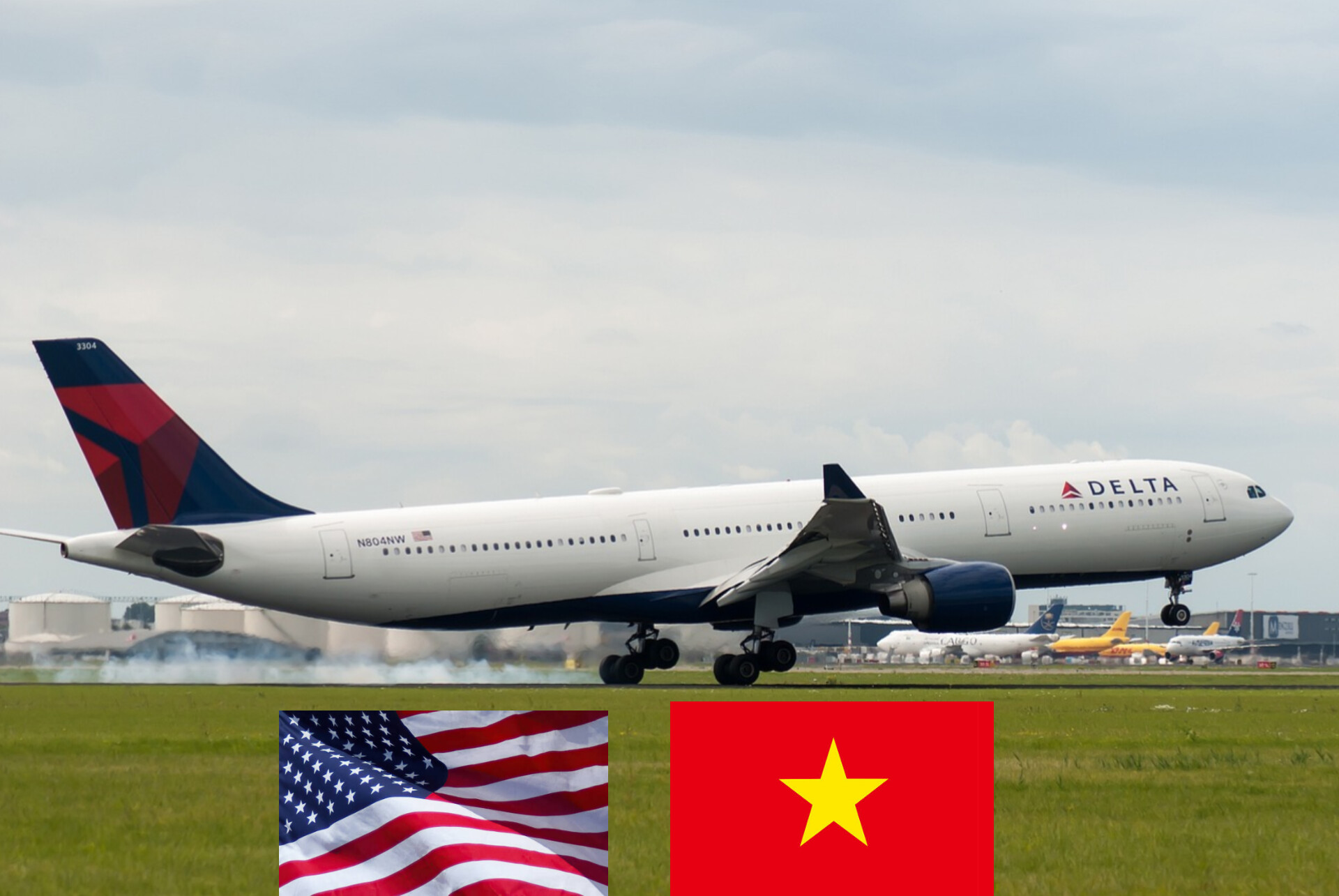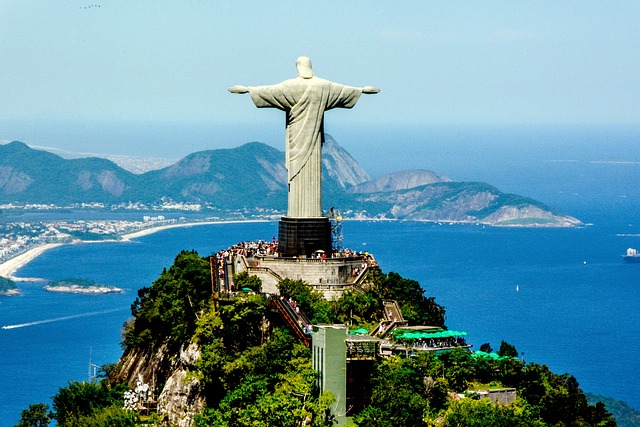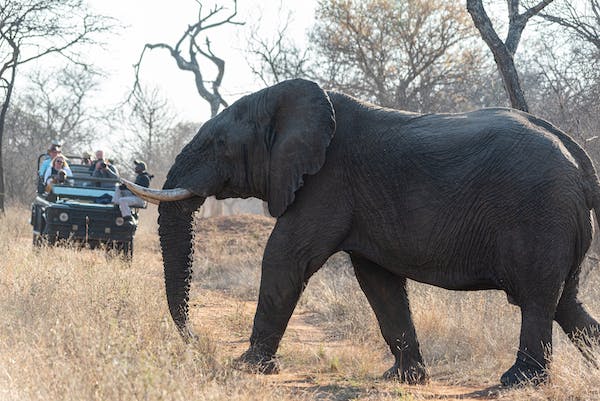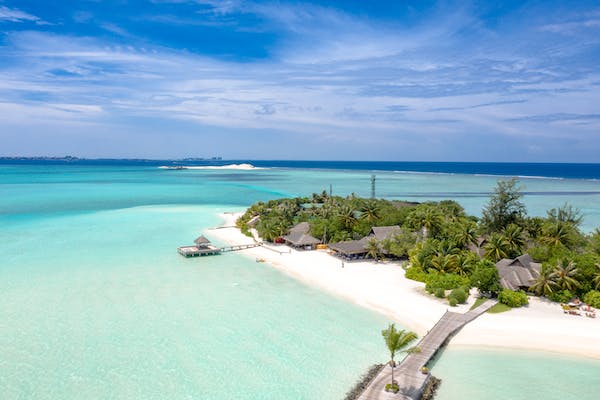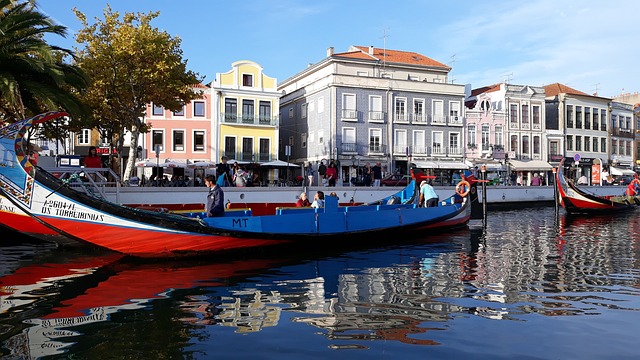Vietnam Visa For US Citizens
With a rich and complicated past, Vietnam is a Southeast Asian country, located along the eastern side of the Indochina Peninsula. Recognized for its many years of dynastic governance, Vietnam boasts a millennium-old cultural legacy shaped by its contacts with China, France, and other countries.
North and South Vietnam were united after the war concluded in 1975, leaving a trail of colonization, resistance, and reunion in the country’s history. This country’s rich history has had a profound impact on modern culture and identity formation. With its 54 ethnic groups, each with its traditions, dialects, and customs, Vietnam boasts a rich cultural landscape. Mainly living in lowland regions, the Kinh people are the predominant ethnic group, strongly influenced by Buddhism, Taoism, and Confucianism.
On the other hand, Vietnam’s cultural mosaic benefits from the diverse ethnic minorities, especially in the country’s north and center, including the Tay, Hmong, and Khmer. Water puppetry, lacquer painting, and the elaborate patterns of Ao Dai, the traditional garment worn by Vietnamese women, are just a few examples of the artistic expressions of Vietnamese culture.
Vietnam’s economy has changed dramatically over the last few decades, going from being devastated by war to becoming one of the fastest-growing in the world. Vietnam has rapidly modernized and industrialized since the Doi Moi policy’s adoption of market-oriented reforms in 1986. It is now a major force in international manufacturing in electronics, textiles, and agriculture.
Vietnam’s economy has also benefited from the country’s natural beauty, which includes the breathtaking limestone islands of Ha Long Bay and the terraced rice fields of Sapa. These attractions have drawn many tourists to the country. Vietnam is an intriguing case study in resiliency and development due to its dynamic blend of history and modernity, which continues to garner interest on the international scene.
Is A Visa Required For US Citizens Visiting Vietnam?
Yes. All US nationals visiting Vietnam for any purpose must have a valid visa, as the US is not included among the nations exempt from visa requirements by the Vietnamese government.
U.S. citizens generally require a visa to visit Vietnam. There are several options for obtaining a visa:
E-Visa: American nationals may apply online for a 30-day maximum stay e-visa. With admission through approved international airports, seaports, and land borders, this is the most practical choice.
Visa on Arrival (VOA): This option is accessible to nationals of the United States who, before they arrive in Vietnam, seek a visa approval letter through a Vietnamese travel agency or visa service. Travelers can get a visa by producing the approval letter at one of the major airports.
Visa at the Embassy/Consulate: Applying for a visa at the Vietnamese embassy or consulate in the United States or another nation is another option available to citizens of the United States. This is necessary for visits lasting longer than thirty days or for certain types of visas (such as work or study visas).
Travel requirements are subject to change; therefore, it’s vital to confirm the most recent requirements before traveling.
Vietnam Visa Type
Depending on the reason for the visit and length of stay, Vietnam offers multiple visa categories. The primary categories of visas that are offered are as follows:
Tourist Visa (DL):
- Single Entry: Allows for a single entry into Vietnam and is valid for 30 days.
- Multiple Entry: Allows for multiple entry into Vietnam within the 30-day validity period of the visa.
Business Visa (DN1 and DN2):
- DN1: Issued to foreign nationals employed by Vietnamese-registered businesses and other organizations.
- DN2: Issued to foreign nationals who enter Vietnam by international treaties that Vietnam is a party to, to provide services, establish a commercial presence, or carry out other operations.
- Offering several entry choices, valid for a maximum of 12 months.
Work Visa (LĐ):
- They are issued to foreign nationals in Vietnam with a valid work permit or who qualify for an exemption from one.
- Validity is usually limited to two years.
Student/Internship Visa (DH):
- Issued to international students and interns in Vietnam.
- Usually awarded for the length of the internship or course.
Diplomatic/Official Visa (NG1, NG2, NG3, NG4):
- Issued to international organization leaders in Vietnam as well as foreign ambassadors and consular officials.
- Subject to the assignment, the validity varies.
Investor Visa (ĐT):
- ĐT1: For foreigners who come to Vietnam as investors or representatives of international organizations and contribute a minimum of VND 100 billion (about USD 4.3 million).
- ĐT2: For investors making contributions ranging from 50 billion to 100 billion Vietnamese dong.
- ĐT3:For those who make contributions ranging from VND 3 billion to VND 50 billion.
- ĐT4: For investors making smaller than 3 billion dong contributions.
- Validity may last up to five years, based on the extent of the financial commitment.
Transit Visa:
- It is required for anyone who must go through Vietnam to get to another destination.
- Usually valid for a short duration, just enough to transit through the country.
E-Visa:
- Accessible for up to 30 days with a single entry for visitors and business travelers.
- It’s available online, covering entry at 33 international checkpoints.
You must choose the right kind of visa for the length of the trip. Use a reliable visa firm or speak with the Vietnamese embassy or consulate, as the requirements and application processes can differ.
Vietnam Visa Requirements For US Citizens
The kind of visa and the purpose of the visit determine the visa requirements for U.S. citizens visiting Vietnam.
Tourist Visa (E-Visa or Visa on Arrival)
- Passport: A current U.S. passport valid for at least six months from the entry date.
- Application Form: Complete the online application on the official Vietnamese government website to obtain an e-visa. Complete the visa application form to receive a visa on arrival.
- Passport Photos: For visa on arrival, two recent passport-sized (4 by 6 cm) pictures are required.
- Visa Fee: For an e-visa, pay the visa fee online; for an arrival visa, pay the amount in person. The cost varies according to the type of visa and the speed of processing.
- Approval Letter: Obtain a visa approval letter before departure from a Vietnamese travel agency or visa service to apply for a visa on arrival. This letter is necessary to get the visa at the airport.
Travel Itinerary: Information on your flight, lodging, and itinerary while visiting Vietnam.
Business Visa
- Passport: A current U.S. passport valid for at least six months from the entry date.
- Application Form: Fill out the application for a visa offered by the Vietnamese consulate or embassy, or use the online portal for business e-visas.
- Passport Photos: Two current passport-sized (4 by 6 cm) pictures.
- Invitation Letter: An invitation letter from a sponsoring corporation or business partner in Vietnam.
- Visa Fee: Depending on the duration of the visa and the type of entry (single or multiple entries), pay the applicable visa charge.
- Business Documents: Documents proving company operations, like contracts or licenses.
- Approval Letter: Like the tourist visa, some business visas could need a Vietnamese Immigration Department permission letter.
Work Visa
- Passport: A valid U.S. passport that is still valid for at least six months.
- Application Form: Fill out the visa application form.
- Passport Photos: Two current passport-sized (4 by 6 cm) pictures.
- Work Permit: A document demonstrating eligibility for a work permit exemption in Vietnam or a valid work permit.
- Visa Fee: Pay the necessary visa cost.
- Approval Letter: A preapproval letter for a visa may be required in certain circumstances.
Student/Internship Visa
- Passport: A current U.S. passport that has at least six months left on it.
- Application Form: Fill out the visa application form.
- Passport Photos: Two current passport-sized (4 by 6 cm) pictures.
- Letter of Admission/Enrollment: A letter from an accredited Vietnamese school or internship organization.
- Visa Fee: Pay the necessary visa cost.
- Approval Letter: Depending on the study program and length of stay, an approval letter can be required.
Investor Visa
- Passport: A current U.S. passport that has at least six months left on it.
- Application Form: Fill out the visa application form.
- Passport Photos: Two current passport-sized (4 by 6 cm) pictures.
- Investment Documents: Evidence of investment in Vietnam, such as a certificate of capital contribution or firm registration.
- Visa Fee: Pay the necessary visa cost.
- Approval Letter: Acquired from the Vietnamese Immigration Department, this is necessary for long-term investment visas.
General Note:
- Visa Processing Time: Depending on the type of visa and the location of the application, processing times might range from a few days to several weeks.
- Health Requirements: In general, there are no particular health requirements, such as vaccines, but it’s a good idea to check for any recommendations.
Extensions: While in Vietnam, it is frequently possible to extend a tourist visa for an additional cost; however, this needs to be done through a local immigration office or service.
The Vietnamese embassy or consulate should be consulted for the most current and correct information, and applying for the visa well ahead of your intended departure date is advised.
How To Apply For A Vietnamese Visa As A US Citizen?
There are various ways for U.S. citizens to apply for a Vietnam visa, based on their travel choices and needs. Here is a detailed how-to for the most popular techniques: Visa on Arrival (VOA), Embassy/Consulate Visa, and E-Visa.
1. Applying for an E-Visa
The most practical choice for American nationals intending a quick trip (up to 30 days) to Vietnam is an e-visa.
Steps:
1. Visit the Official E-Visa Website:
- To apply for an e-visa, visit the official Vietnamese government website.
2. Complete the Application Form:
- Provide your vacation itinerary, passport data, and personal information on the web form.
- Upload a scanned copy of your passport’s bio page and a current passport-sized photo.
3. Pay the Visa Fee:
- The e-visa fee is approximately $25 for a single-entry and $50 for multiple-entry, payable online via credit or debit card. This fee is non-refundable.
4. Receive the E-Visa:
- It takes three working days to process. You’ll get an email with the e-visa once it’s authorized.
- Print a copy of the e-visa to present upon arrival in Vietnam.
5. Entry and Exit:
- The authorized entry/exit locations specified on the e-visa website are where you can utilize the e-visa.
2. Applying for a Visa on Arrival (VOA)
For individuals who would rather receive their visa upon arrival in Vietnam, there is an option known as Visa on Arrival (VOA). Before leaving, this approach requires an approval letter.
Steps:
1. Obtain a Visa Approval Letter:
- To obtain a visa approval letter, contact a Vietnamese travel agent or an online visa provider. This is required to get a VOA.
- Give your passport and personal information. The service fees range from $10 to $20.
2. Receive the Approval Letter:
- You will receive an email with the acceptance letter in two to three business days.
- Print the approval letter, then have two passport-sized (4 by 6 cm) pictures ready.
3. Arrival in Vietnam:
- Go to the VOA counter when you arrive at one of the main international airports in Vietnam (Hanoi, Ho Chi Minh City, or Da Nang).
4. Submit Your Documents:
- Show your passport, the letter of approval, the completed visa application form (which can be obtained from your visa service or at the airport), and passport images.
5. Pay the Stamping Fee:
- Pay the stamping charge in cash, in Vietnamese dong, or in US dollars. The stamping fee is $25 for a single-entrance visa and $50 for a multiple-entry visa.
6. Receive Your Visa:
- Your passport will be stamped with your visa after it has been processed.
3. Applying at the Vietnamese Embassy/Consulate
This is a good choice if you require a visa for a longer stay or would like to get it before leaving.
Steps:
- Prepare Your Documents:
- A completed visa application form can be obtained at the embassy or online.
- Your original passport is valid for a minimum of six months.
- Two passport-sized (4 x 6 cm) pictures.
- If applying via mail, please include a prepaid, self-addressed envelope.
2. Submit Your Application:
- You can mail your documentation or physically visit the Vietnamese embassy or consulate.
- Pay the visa fee, which varies depending on the type of visa and processing time.
3. Wait for Processing:
- Processing normally takes three to five business days, however, for a surcharge, expedited services could be offered.
4. Receive Your Visa:
- After it is accepted, you can pick it up in person or have your visa stamped in your passport and returned to you by mail, if you applied by mail.
Depending on how long you want to remain and how you want to conduct the visa procedure, each approach has its advantages. Before application, always confirm the most recent details as visa regulations are subject to change.
Contact for Vietnamese Embassies/Consulates in the U.S.
Embassy of Vietnam in Washington, D.C.
- Address: 1233 20th Street NW, Suite 400, Washington, DC 20036
- Phone: (202) 861-0737
- Website: Vietnam Embassy in the U.S.
Consulate General of Vietnam in San Francisco
- Address: 1700 California St, Suite 430, San Francisco, CA 94109
- Phone: (415) 922-1707
- Website: Vietnam Consulate in San Francisco
Do Kids Need a Visa To Enter Vietnam?
Yes, a valid visa is needed for children to enter Vietnam, regardless of age. Children must meet similar visa criteria. The following are some crucial things to note:
- Individual Visa for Each Child
- To enter Vietnam, each child needs to have a visa. Whether traveling on their passport or as part of a parent’s passport, babies and toddlers also require a visa.
2. Passport Requirements for Children
- Even if kids are traveling on their parent’s passport, they still need to have a visa and valid passport with at least six months left on it when they enter the country.
3. E-Visa and Visa on Arrival (VOA)
- Adults and children can apply for an e-visa or a visa upon arrival. The procedure is the same; pertinent travel details and a passport photo are needed.
4. Application Process
- Each child’s application for an e-visa must be submitted separately.
- Children’s information should be provided when asking the visa service provider for a letter of approval for a visa on arrival.
5. Additional Documentation
- Certain airlines or immigration officials may need a letter of authorization from the parent(s) who are not traveling if the minor is flying without both parents. It is best to confirm these prerequisites before departure.
Tips For Visitors To Vietnam
Vietnam’s official language is Vietnamese (Tiếng Việt). As the official language of the nation, it is utilized in everyday conversations, government, education, and the media.
Particularly in metropolitan areas and among younger generations, English is being taught widely and spoken more and more. Some people also speak French, Chinese, Japanese, and Korean as second languages, which reflects Vietnam’s ties to these countries historically and economically.
The Best Time Of The Year To Visit Vietnam
Vietnam has three unique climate zones: the north, central, and south. Depending on the location you wish to explore, you can determine the best time to visit. It’s crucial to pick the ideal time of year depending on your interests and location because every zone has distinct weather patterns throughout the year. The right time to visit each region is broken down as follows:
1. Northern Vietnam (Hanoi, Halong Bay, and Sapa)
- Ideal Travel Period: October through April
- The weather is temperate and pleasant during this time of year, with the best months to trek in Sapa, explore Hanoi, and cruise in Halong Bay is October through December when temperatures vary from 15°C to 25°C (59°F to 77°F).
- Avoid: May through September is when the area gets a lot of rain and hot, muggy weather.
2. Central Vietnam (Hue, Da Nang, Hoi An)
- Ideal Travel Period: February through August
- During this time of year, Central Vietnam experiences warm, sunny weather with temperatures between 25°C and 35°C (77°F and 95°F). This time of year is perfect for trips to the royal city of Hue, discovering the old village of Hoi An, and taking beach vacations in Da Nang.
- Avoid: This area is vulnerable to typhoons and strong rainfall, which can cause floods, from September to November.
3. Southern Vietnam (Ho Chi Minh City, Mekong Delta, Phu Quoc)
- Ideal Travel Period: December to April
- In the southern hemisphere, this is the dry season, with pleasant temperatures between 25°C and 35°C (77°F and 95°F). It’s ideal for taking in the Mekong Delta, exploring Ho Chi Minh City, and relaxing on the Phu Quoc beaches.
- Avoid: The rainy season lasts from May to November. Rainfall can be problematic for outdoor activities, even though it is typically brief and intense.
General Note:
- Peak Tourist Season: Across the nation, December to February is regarded as the busiest travel months. It’s the most popular season because of the normally good weather.
- Off-Peak Season: Fewer people travel between May and September because of the rainy season in the south and the hot, muggy weather in the north. Nonetheless, it may be a wonderful time to get low prices on travel and lodging.
In conclusion, October through April is often the greatest season to visit Vietnam because most places have pleasant weather during this time, which makes it simpler to see the country’s natural and cultural landmarks.
Is It Safe To Travel To Vietnam?
Vietnam is regarded as a safe destination for travel. One of the most well-liked travel destinations in Southeast Asia, it is renowned for its breathtaking scenery, vibrant culture, and amiable residents. To guarantee a trouble-free and pleasurable journey, it is crucial to take certain precautions, just like when visiting any nation.
Tourists can travel safely through Vietnam’s main cities, including Da Nang, Ho Chi Minh City, and Hanoi. Staying alert and protecting your possessions are advised because petty crimes like pickpocketing and bag snatching can happen in busy places.
In some places, scams aimed at tourists are not uncommon, especially those involving taxi drivers or tour guides who overcharge. For transportation, it’s preferable to utilize apps like Grab (comparable to Uber), arrange rates in advance, and choose reliable providers.
With so many motorbikes on the road, traffic in Vietnam, particularly in major cities like Hanoi and Ho Chi Minh City, can be quite hectic. Because of the constant cars on the road, crossing the street can be difficult at first, but it becomes easier when you get into the rhythm. Always cross at authorized crosswalks, and go cautiously without stopping abruptly.
Vietnam is a typically kind and accommodating country with low violent crime rates. Women who travel alone frequently feel secure, especially in well-known tourist destinations.
For most travelers, Vietnam is a safe place to visit. You can have a worry-free and enjoyable trip to this stunning nation by taking the usual safety precautions, such as being alert to your surroundings, protecting your things, and honoring local customs.
Top Tourist Destinations in Vietnam
1. Hanoi
2. Ha Long Bay
3. Sapa
4. Hoi An
5. Hue
6. Da Nang
7. Ho Chi Minh City (Saigon)
8. Mekong Delta
9. Phong Nha-Ke Bang National Park
10. Phu Quoc Island
These locations highlight Vietnam’s diversity, including its vibrant cities, serene countryside, ancient ruins, and breathtaking natural settings. Vietnam provides something for everyone, regardless of interests in history, culture, adventure, or leisure.
